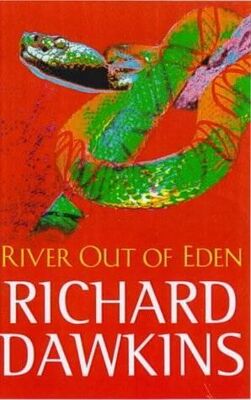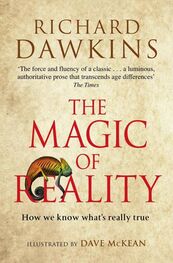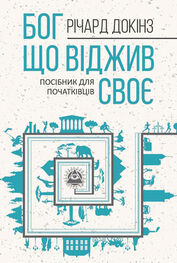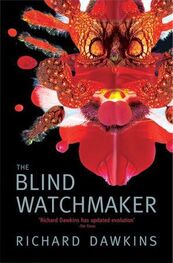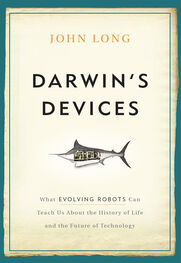What we can do is guess at a general chronology of a life explosion on any planet, anywhere in the universe. The details of what will work must depend on local conditions. The DNA/protein system wouldn't work in a world of chilled liquid ammonia, but perhaps some other system of heredity and embryology would. Anyway, those are just the kinds of specifics I want to ignore, because I want to concentrate on the planet-independent principles of the general recipe. I'll go more systematically now through the list of thresholds that any planetary replication bomb can be expected to pass. Some of these are likely to be genuinely universal. Others may be peculiar to our own planet. It may not always be easy to decide which are likely to be universal and which local, and this question is interesting in its own right.
Threshold 1 is, of course, the Replicator Threshold itself: the arising of some kind of self-copying system in which there is at least a rudimentary form of hereditary variation, with occasional random mistakes in copying. The consequence of Threshold l's being passed is that the planet comes to contain a mixed population, in which variants compete for resources. Resources will be scarce – or will become scarce when the {152} competition hots up. Some variant replicas will turn out to be relatively successful in competing for scarce resources. Others will be relatively unsuccessful. So now we have a basic form of natural selection.
To begin with, success among rival replicators will be judged purely on the direct properties of the replicators themselves – for example, how well their shape fits a template. But now, after many generations of evolution, we move on to Threshold 2, the Phenotype Threshold. Replicators survive not by virtue of their own properties but by virtue of causal effects on something else, which we call the phenotype. On our planet, phenotypes are easily recognized as those parts of animal and plant bodies that genes can influence. That means pretty well all bits of bodies. Think of phenotypes as levers of power by which successful replicators manipulate their way into the next generation. More generally, phenotypes may be defined as consequences of replicators that influence the replicators' success but are not themselves replicated. For instance, a particular gene in a species of Pacific island snail determines whether the shell coils to the right or to the left. The DNA molecule itself is not right- or left-handed, but its phenotypic consequence is. Left-handed and right-handed shells may not be equally successful at the business of providing the outer protection for snail bodies. Because snail genes ride inside the shells whose shape they help to influence, genes that make successful shells will come to outnumber genes that make unsuccessful shells. Shells, being phenotypes, do not spawn daughter shells. Each shell is made by DNA, and it is DNA that spawns DNA. {153}
DNA sequences influence their phenotypes (like the direction of coiling of shells) via a more or less complicated chain of intermediate events, all subsumed under the general heading of “embryology.” On our planet, the first link in the chain is always the synthesis of a protein molecule. Every detail of the protein molecule is precisely specified, via the famous genetic code, by the ordering of the four kinds of letters in the DNA. But these details are very probably of local significance only. More generally, a planet will come to contain replicators whose consequences (phenotypes) have beneficial effects, by whatever means, on the replicators' success at getting copied. Once the Phenotype Threshold is crossed, replicators survive by virtue of proxies, their consequences on the world. On our planet, these consequences are usually confined to the body in which the gene physically sits. But this is not necessarily so. The doctrine of the Extended Phenotype (to which I have devoted a whole book with that title) states that the phenotypic levers of power by which replicators engineer their long-term survival do not have to be limited to the replicators' “own” body. Genes can reach outside particular bodies and influence the world at large, including other bodies.
I don't know how universal the Phenotype Threshold is likely to be. I suspect that it will have been crossed on all those planets where the life explosion has proceeded beyond a very rudimentary stage. And I suspect that the same is true of the next threshold in my list. This is Threshold 3, the Replicator Team Threshold, which may on some planets be crossed before, or at the same time as, the Phenotype {154} Threshold. In early days, replicators are probably autonomous entities bobbing about with rival naked replicators in the headwaters of the genetic river. But it is a feature of our modern DNA/protein information-technology system on Earth that no gene can work in isolation. The chemical world in which a gene does its work is not the unaided chemistry of the external environment. This, to be sure, forms the background, but it is quite a remote background. The immediate and vitally necessary chemical world in which the DNA replicator has its being is a much smaller, more concentrated bag of chemicals – the cell. In a way, it is misleading to call a cell a bag of chemicals, because many cells have an elaborate internal structure of folded membranes on which, in which, and between which vital chemical reactions go on. The chemical microcosm that is the cell is put together by a consortium of hundreds – in advanced cells, hundreds of thousands – of genes. Each gene contributes to the environment, which they all then exploit in order to survive. The genes work in teams. We saw this from a slightly different angle in chapter 1.
The simplest of autonomous DNA-copying systems on our planet are bacterial cells, and they need at least a couple of hundred genes to make the components they need. Cells that are not bacteria are called eukaryotic cells. Our own cells, and those of all animals, plants, fungi and protozoa, are eukaryotic cells. They typically have tens or hundreds of thousands of genes, all working as a team. As we saw in chapter 2, it now seems probable that the eukaryotic cell itself began as a team of half a dozen or so bacterial cells that clubbed together. But this is a higher-order form of teamwork and is not what I am {155} talking about here. I am talking about the fact that all genes do their work in a chemical environment put together by a consortium of genes in the cell.
Once we have grasped the point about genes working in teams, it is obviously tempting to leap to the assumption that Darwinian selection nowadays chooses among rival teams of genes – to assume that selection has moved up to higher levels of organization. Tempting, but in my view wrong at a profound level. It is much more illuminating to say that Darwinian selection still chooses among rival genes, but the genes that are favored are those that prosper in the presence of the other genes that are simultaneously being favored in one another's presence. This is the point we met in chapter 1, where we saw that genes sharing the same branch of the digital river tend to become “good companions.”
Perhaps the next major threshold to be crossed as a replication bomb gathers momentum on a planet is the Many-Cells Threshold, and I'll call this Threshold 4. Any one cell in our life form, as we saw, is a little local sea of chemicals in which a team of genes bathe. Although it contains the whole team, it is made by a subset of the team. Now, cells themselves multiply by splitting in half, with each one growing to full size again. When this happens, all the members of the team of genes are duplicated. If the two cells do not separate fully but remain attached to one another, large edifices can form, with cells playing the role of bricks. The ability to make many-celled edifices may well be important on other worlds as well as our own. When the Many-Cells Threshold has been crossed, phenotypes can arise whose shapes and functions are {156} appreciated only on a scale hugely greater than the scale of the single cell. An antler or a leaf, an eye's lens or a snail's shell – all these shapes are put together by cells, but the cells are not miniature versions of the large shape. Many-celled organs, in other words, do not grow the way crystals do. On our planet, at least, they grow more like buildings, which are not, after all, the shape of overgrown bricks. A hand has a characteristic shape, but it is not made of hand-shaped cells, as it would be if phenotypes grew like crystals. Again like buildings, many-celled organs acquire their characteristic shapes and sizes because layers of cells (bricks) follow rules about when to stop growing. Cells must also, in some sense, know where they sit in relation to other cells. Liver cells behave as if they know that they are liver cells and know, moreover, whether they are on the edge of a lobe or in the middle. How they do this is a difficult question and a much studied one. The answers are probably local to our planet and I shall not consider them further here. I have already touched upon them in chapter 1. Whatever their details, the methods have been perfected by exactly the same general process as all other improvements in life: the nonrandom survival of successful genes judged by their effects – in this case, effects on cell behavior in relation to neighboring cells.
Читать дальше